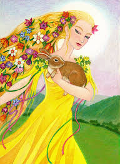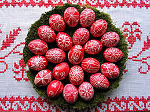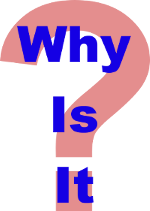|
Why Are a Rabbit and Eggs Associated with Easter? Common secular symbols of Easter in most Western countries today include a rabbit and eggs. The traditions and practices involving these two seemingly incompatible elements have a long and varied history. 
The Anglo-Saxon goddess of spring was Eostre, which has sometimes been spelled Eastre or Ostara. The Anglo-Saxons celebrated this goddess in April, to mark spring and fertility. (This was in the North America, when spring occurs at that time of year.) The sacred animal associated with this goddess was the hare. The hare, or rabbit, is seen as a symbol of fertility because such animals usually are very prolific. Rabbits are associated with gods in other religions, such as Aphrodite in the Greek tradition and Freyja (or Frigga) in the Norse tradition. The egg has long been associated with fertility and springtime festivals as well. 
As with the tradition of Groundhog Day, America has a German connection with the Easter bunny as well. Many German immigrants settled in what is now Pennsylvania and the surrounding area, and they brought with them many traditions, including the story of Oschter Haws or Osterhase, a hare who laid colored eggs in nests on Easter morning. Those elements of the story seem to have been fully formed by the time the tradition got to America. 
The egg also has religious symbolism, in both Judaism and Christianity. Eggs feature in the Jewish seder meal, commonly partaken in conjunction with Passover, which occurs in the springtime. These are sometimes called Paschal eggs. (The Greek word for Passover is Pascha). Christianity has a similar tradition, with eggs being associated with rebirth, specifically the tomb from which Jesus emerged after his resurrection. Indeed, Easter is the Christian time of rebirth and resurrection. 
The practice of decorating eggs dates to the Middle Ages, some sources say. People at that time were forbidden from eating eggs during Lent. The only way to keep eggs from spoiling for such a long time was to boil them. People would then paint or otherwise decorate them in order to increase the celebration once Lent ended, in Easter.  As for chocolate rabbits and eggs and chicks and jelly beans and other such confections, that is all a modern invention, of treat-makers looking to create has what has turned out to be an extremely lucrative market: Easter trails only Halloween in amount of candy sold. As for chocolate rabbits and eggs and chicks and jelly beans and other such confections, that is all a modern invention, of treat-makers looking to create has what has turned out to be an extremely lucrative market: Easter trails only Halloween in amount of candy sold.
See also Why Does the Date of Easter Move?. Have a suggestion for this feature? Email Dave. |
Social Studies for Kids |





